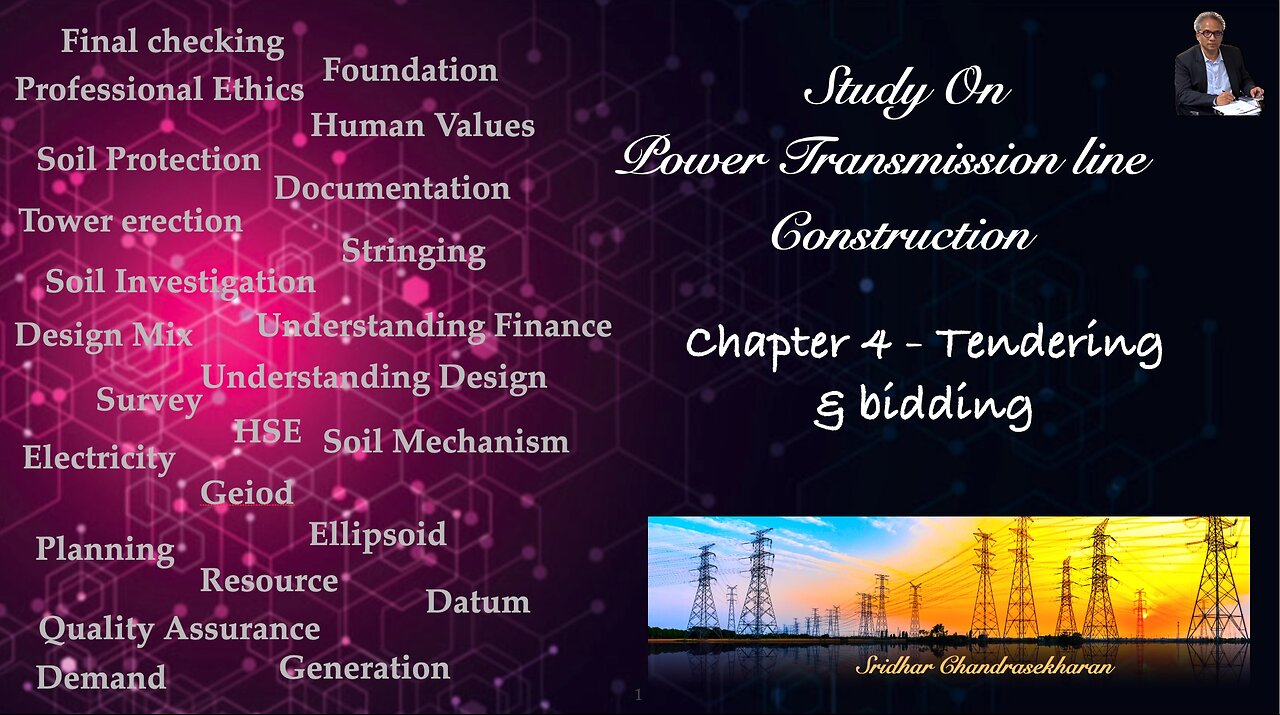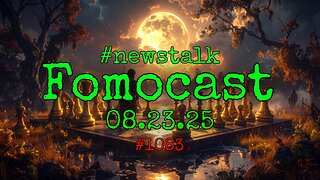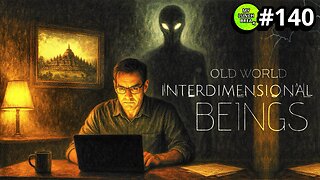Premium Only Content

Chapter 4 - Tendering & Bidding ( Study On Power transmission line Construction).
Till now, I have uploaded three chapters, and today we move to Chapter Four. Below is a summary of the previous chapters and an introduction to this new chapter:
Chapter 1: We began with the basics of electricity, covering fundamental concepts such as atoms, the nucleus, and electrons. The chapter explained electron flow in conductors and insulators and introduced key concepts like the electric field, magnetic field, and the electromagnetic field. We also explored how electricity is generated, including the principles of current, voltage, and the differences between alternating current (AC) and direct current (DC). Additionally, the chapter touched upon the production of single-phase and three-phase electricity, forming a strong foundation for understanding electrical systems.
Chapter 2, Part 1: In the first part of Chapter 2, we dived into the topic of power generation, focusing on global electricity generation trends and the functioning of thermal power plants. This included a detailed look at key components such as turbines and generators, along with the role of fossil fuels like coal, natural gas, and oil in electricity production.
Chapter 2, Part 2: Continuing with power generation, the second part of Chapter 2 explored nuclear power generation and various forms of renewable energy. These included solar, wind, hydro, geothermal, and biomass power generation methods. Emerging technologies like hydrogen fuel cells, tidal energy, and wave energy were also introduced, offering a glimpse into the future of sustainable power production.
Chapter 3: We shifted focus to the prerequisite activities for project development, emphasizing the demand for transmission lines, their critical requirements, and the meticulous planning involved in their development. This chapter laid the groundwork for understanding the role of transmission infrastructure in ensuring electricity reaches end-users efficiently and reliably.
Chapter 4: Now, in Chapter Four, we will delve into the Project Tendering Process and the Contractor Bidding Process. This chapter aims to provide valuable insights for project engineers by illustrating how projects are tendered by clients and the structured bidding processes through which contractors secure these projects. By the end of this chapter, you will gain a clear understanding of how the tendering and bidding process functions, the roles of various stakeholders, and the steps involved in selecting and awarding contracts for successful project execution.
-
 LIVE
LIVE
Tundra Tactical
4 hours ago🎯💥 The World’s Okayest Gun Show 🔫😂 | LIVE Tonight on Rumble!
223 watching -

Mally_Mouse
23 hours ago🌶️ 🥵Spicy BITE Saturday!! 🥵🌶️- Let's Play: Tower Unite!
22.5K1 -
 58:59
58:59
MattMorseTV
4 hours ago $0.76 earned🔴Trump just BROKE Newsom.🔴
42.3K36 -
 18:14
18:14
Her Patriot Voice
4 hours agoWho Is WORSE for NYC: Trump Girl or Socialist?
15.7K22 -
 DVR
DVR
SavageJayGatsby
3 hours agoSpicy Saturday with Mally! | Road to 100 | $300 Weekly Goal for Spicy Bites!
24.6K -
 LIVE
LIVE
FomoTV
5 hours ago🚨 Swamp Theater: FBI Raids Bolton 🕵 Still NO Epstein Files, Trump's Troops & the Red Heifer Hoax 🐂 | Fomocast 08.23.25
79 watching -
 6:04:40
6:04:40
Akademiks
8 hours agoRoc Nation & Meg Thee Stallion did a 7 HOUR Deposition with me. Drake Secret Kid Finally Revealed.
45.1K1 -
 24:19
24:19
Stephen Gardner
5 hours ago🚨BREAKING: FBI Raid of John Bolton’s House Reveals THIS!
47.4K111 -
 8:31
8:31
MattMorseTV
7 hours ago $1.02 earnedTexas just did the IMPOSSIBLE.
43.2K58 -
 24:39
24:39
MYLUNCHBREAK CHANNEL PAGE
1 day agoInterdimensional Beings at Borobudur
52.2K27